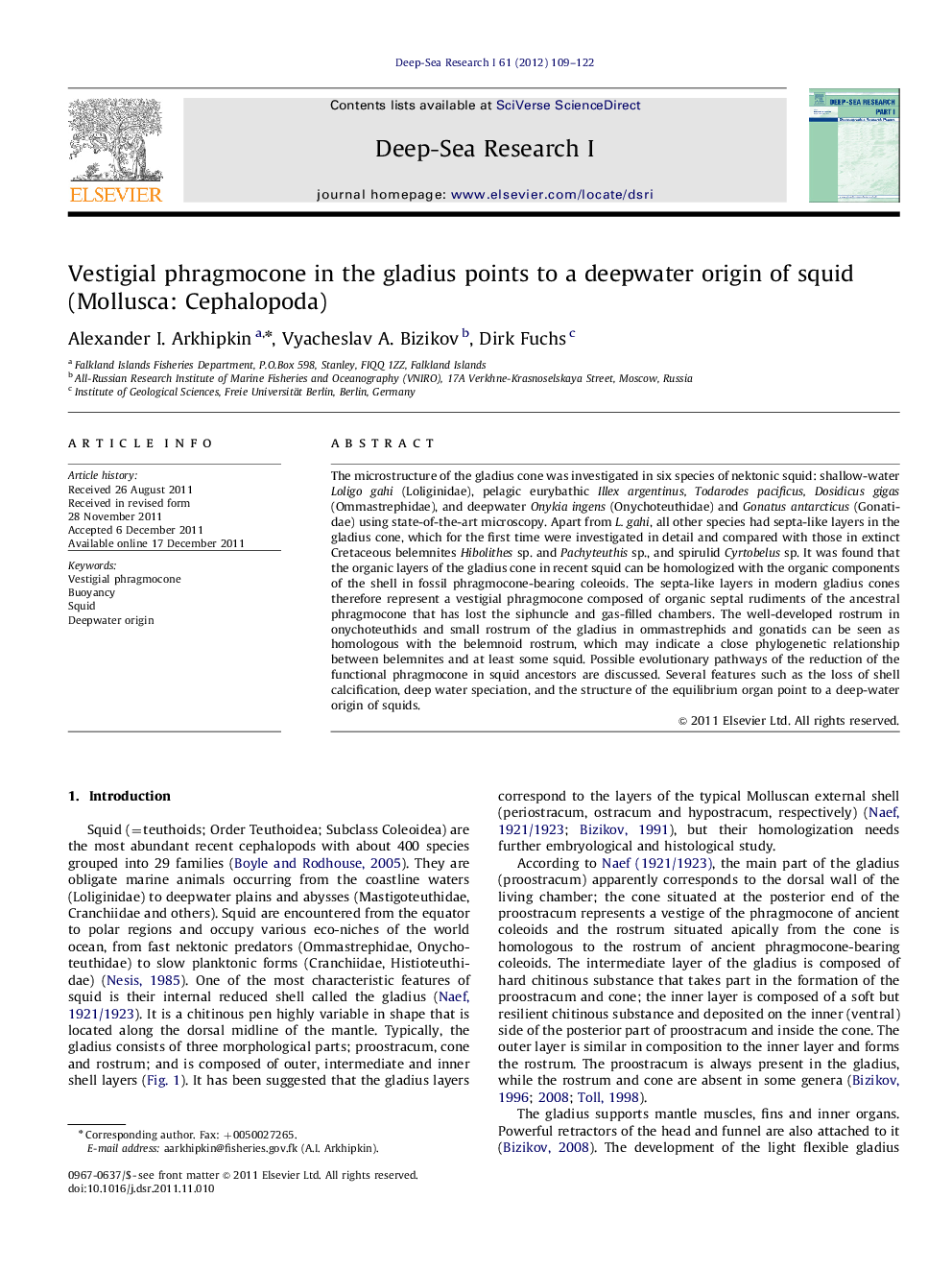| کد مقاله | کد نشریه | سال انتشار | مقاله انگلیسی | نسخه تمام متن |
|---|---|---|---|---|
| 4534749 | 1626369 | 2012 | 14 صفحه PDF | دانلود رایگان |

The microstructure of the gladius cone was investigated in six species of nektonic squid: shallow-water Loligo gahi (Loliginidae), pelagic eurybathic Illex argentinus, Todarodes pacificus, Dosidicus gigas (Ommastrephidae), and deepwater Onykia ingens (Onychoteuthidae) and Gonatus antarcticus (Gonatidae) using state-of-the-art microscopy. Apart from L. gahi, all other species had septa-like layers in the gladius cone, which for the first time were investigated in detail and compared with those in extinct Cretaceous belemnites Hibolithes sp. and Pachyteuthis sp., and spirulid Cyrtobelus sp. It was found that the organic layers of the gladius cone in recent squid can be homologized with the organic components of the shell in fossil phragmocone-bearing coleoids. The septa-like layers in modern gladius cones therefore represent a vestigial phragmocone composed of organic septal rudiments of the ancestral phragmocone that has lost the siphuncle and gas-filled chambers. The well-developed rostrum in onychoteuthids and small rostrum of the gladius in ommastrephids and gonatids can be seen as homologous with the belemnoid rostrum, which may indicate a close phylogenetic relationship between belemnites and at least some squid. Possible evolutionary pathways of the reduction of the functional phragmocone in squid ancestors are discussed. Several features such as the loss of shell calcification, deep water speciation, and the structure of the equilibrium organ point to a deep-water origin of squids.
► The posterior part of the squid gladius was studied in detail using state-of-the-art microscopy.
► The septal structure within the gladius cone represents a decalcified vestigial phragmocone.
► The gladius cone layers can be homologized with organic components of the shell of fossil coleoids.
► The reduction of the dysfunctional rostrum–phragmocone system with subsequent decalcification of the internal shell during movement to deepwater habitats seems to be the most plausible evolutionary scenario for squid ancestors.
► The loss of shell calcification with deep water speciation point to a deep-water origin of squids.
Journal: Deep Sea Research Part I: Oceanographic Research Papers - Volume 61, March 2012, Pages 109–122